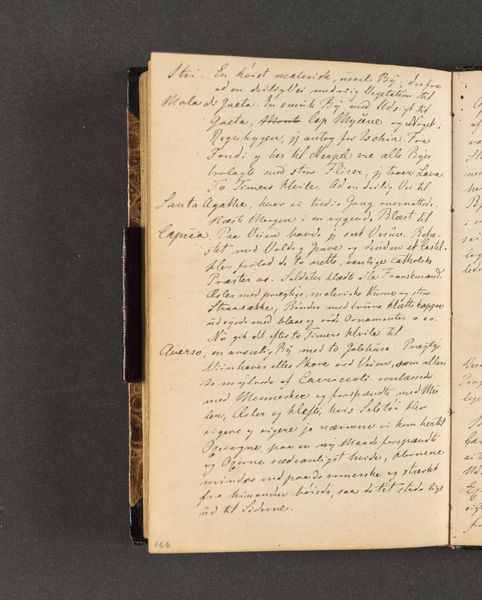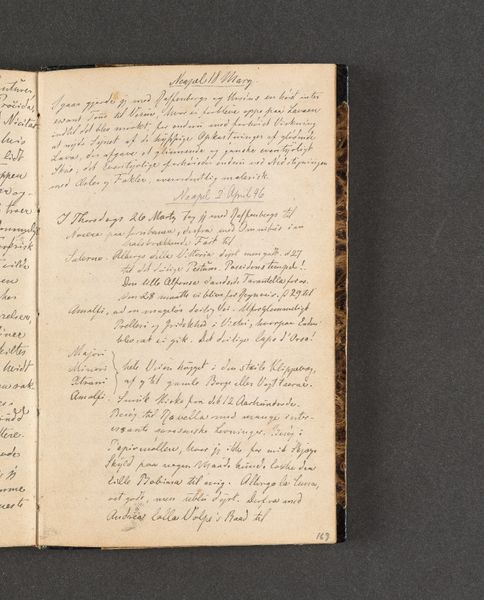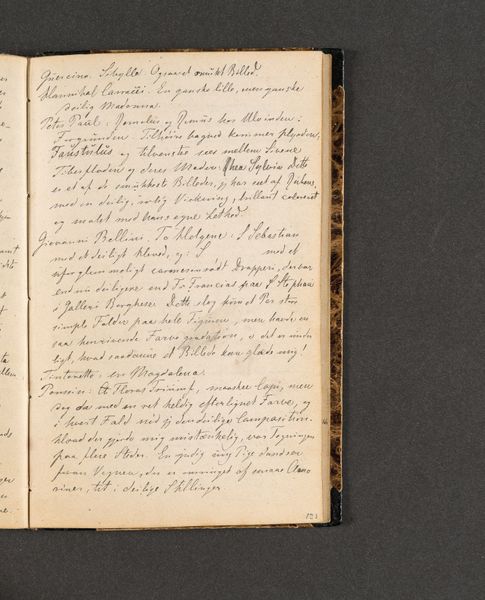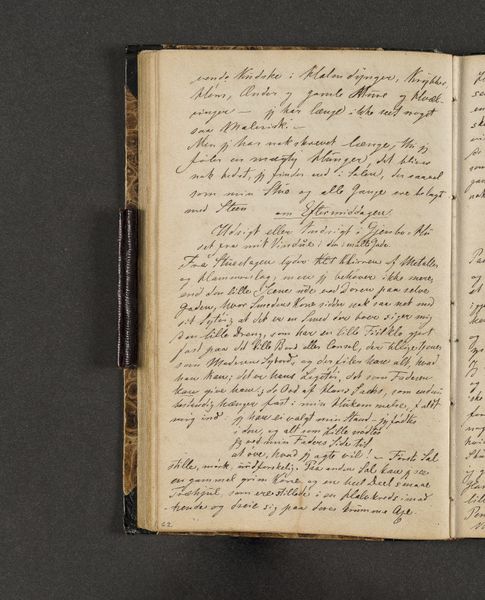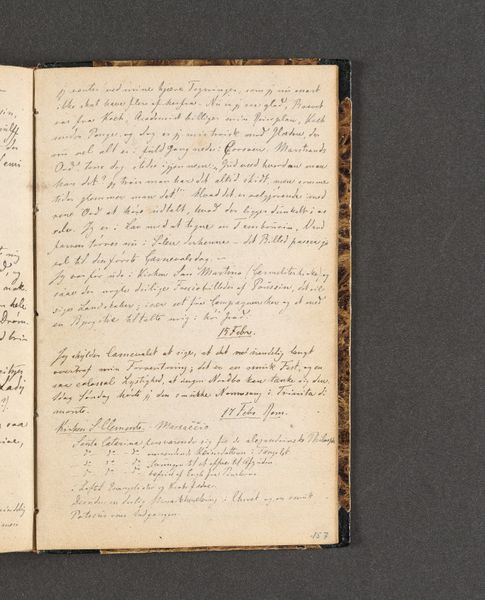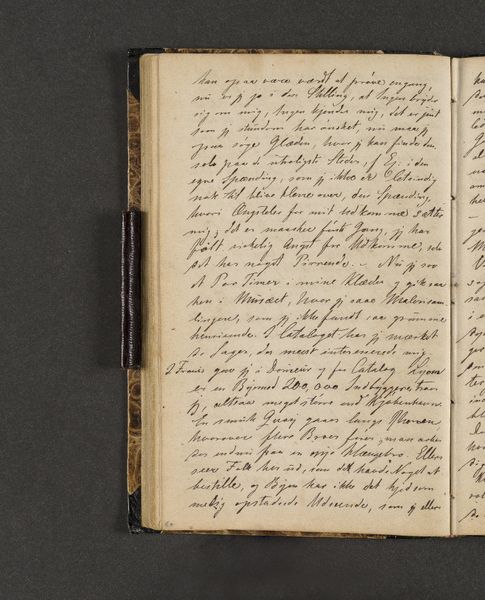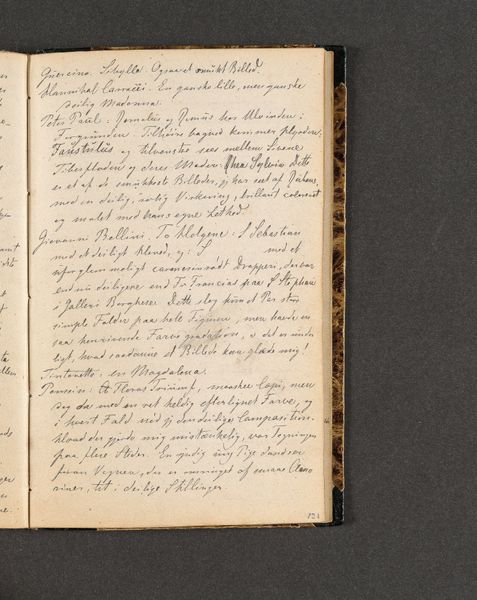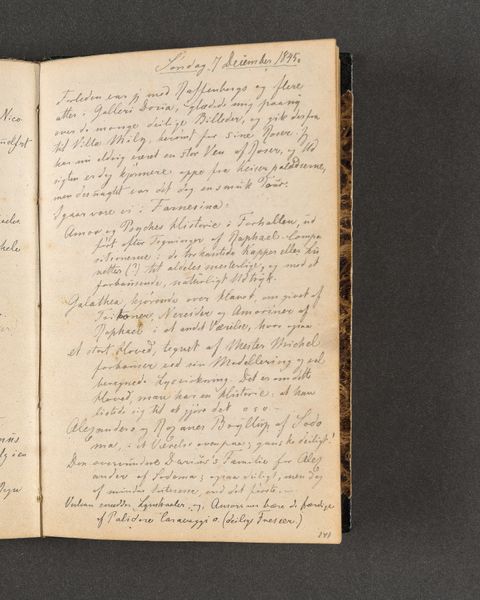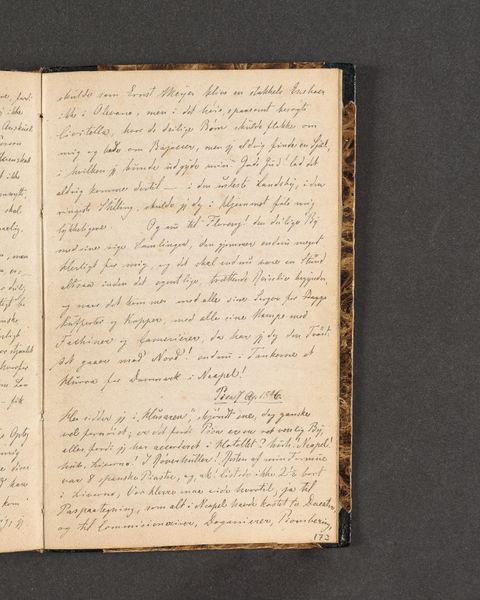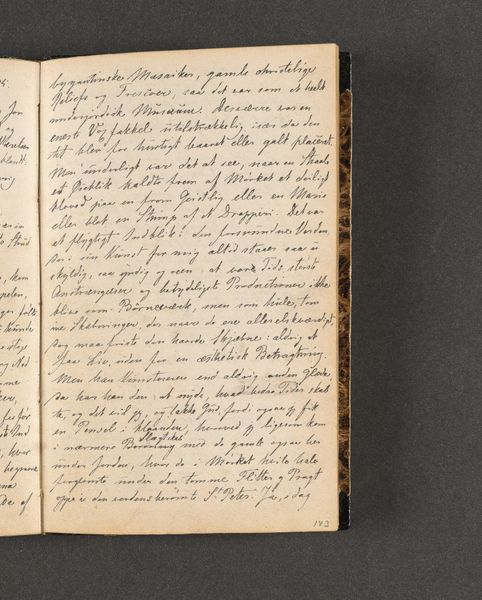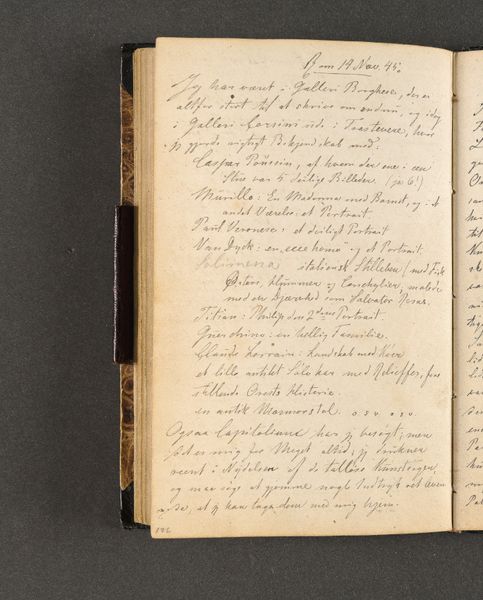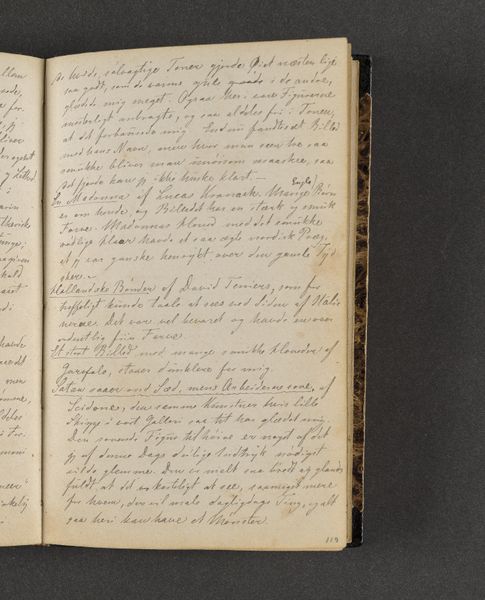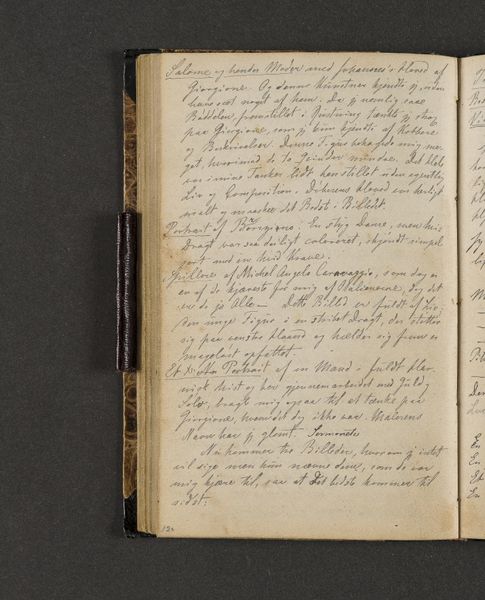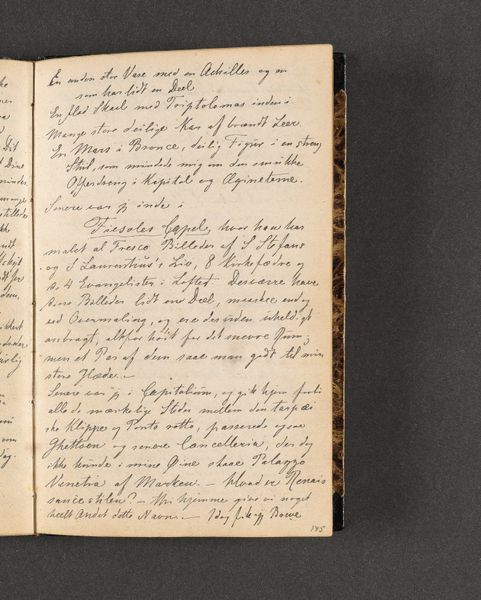
drawing, textile, paper, ink
#
drawing
#
textile
#
paper
#
personal sketchbook
#
ink
#
journal
#
romanticism
#
design on paper
Dimensions: 161 mm (height) x 103 mm (width) x 11 mm (depth) (monteringsmaal)
Editor: Here we have Johan Thomas Lundbye's "Rejsedagbog" from 1846, a personal sketchbook filled with ink drawings and text on paper and textile. It's incredible how intimate and immediate the handwriting feels. What do you see in this piece, beyond it being a journal? Curator: It’s crucial to recognize that this isn't just a simple record of Lundbye's travels. As an artist working during the Danish Golden Age, his romantic sensibilities positioned nature and personal experience as intertwined with national identity. How does the act of documenting landscapes, people, and reflections become an act of claiming space and belonging in his eyes, and potentially for the burgeoning national consciousness of Denmark at the time? Editor: That’s a great point! So it’s not just about recording what he saw, but also about contributing to a broader narrative about Denmark itself? Curator: Exactly. Think about how access to travel and documentation like this might have been perceived in relation to class and privilege. Lundbye's ability to observe, record, and interpret becomes a powerful act. How might his sketches and written observations contribute to or even challenge existing social hierarchies and power dynamics in Denmark? What unspoken voices and experiences might be absent from his record? Editor: I see. It makes me think about who gets to write history, and how personal narratives can reflect broader social structures. Curator: Precisely. And how those narratives, like Lundbye's travel journal, can be both revealing and limiting depending on the social context from which they emerged. Thinking critically about that relationship is essential. Editor: This has really given me a different perspective on what a simple travel journal can represent. Curator: Indeed. Examining art through a socio-political lens allows us to unpack layers of meaning and critically assess whose stories are being told and whose are being left out.
Comments
No comments
Be the first to comment and join the conversation on the ultimate creative platform.
